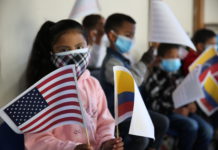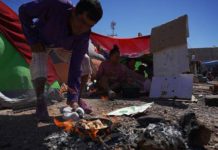
The notion of who does and doesn’t qualify for refugee status is one many countries grapple with.
The formal, internationally recognized, definition of a refugee is set out in the United Nations Convention Relating to the Status of Refugees, which established the rights of people seeking asylum in a country other than their own and the responsibilities of countries that grant asylum.
Approved at a United Nations conference in 1951 and brought into force in 1954, the convention initially sought to codify the rights of refugees in post-war Europe. In 1967, the convention was amended to include a protocol that broadened its geographical purview. There are currently 147 countries, including Canada, that have ratified the convention, the protocol or both.
The definition of a refugee, as laid out in Section 1(A) of the convention, is:
“A person who owing to a well-founded fear of being persecuted for reasons of race, religion, nationality, membership of a particular social group or political opinion is outside the country of his nationality and is unable or, owing to such fear, is unwilling to avail himself of the protection of that country; or who, not having a nationality and being outside the country of his former habitual residence as a result of such events, is unable or, owing to such fear, is unwilling to return to it.”
Refugees are protected at a state level by human rights legislation and national immigration and refugee laws, such as Canada’s Immigration and Refugee Protection Act, and at an international level by the UN convention, the United Nations High Commissioner for Refugees (UNHCR) and, indirectly, through various international covenants and charters guaranteeing human rights.
One of the pillars of the UN convention is the principle of non-refoulement. Taken from the French word refouler, meaning to drive back, it basically means that no refugee should be returned to a country where he or she is in danger of persecution.
The exact wording, as laid out in Article 33(1) of the 1951 convention, is:
“No contracting state shall expel or return (‘refouler’) a refugee in any manner whatsoever to the frontiers of territories where his life or freedom would be threatened on account of his race, religion, nationality, membership of a particular social group or political opinion.”











